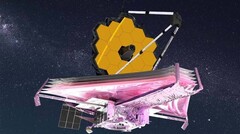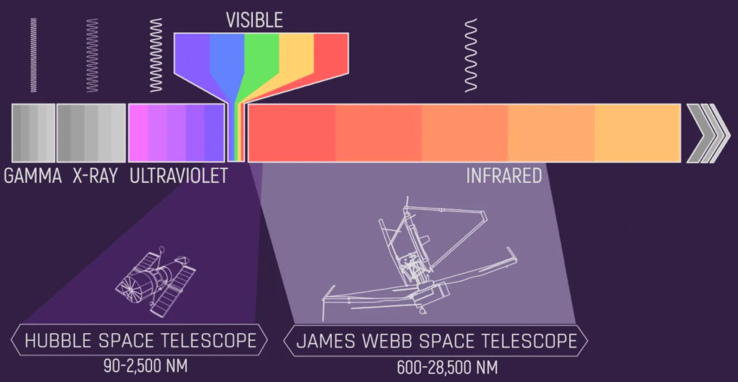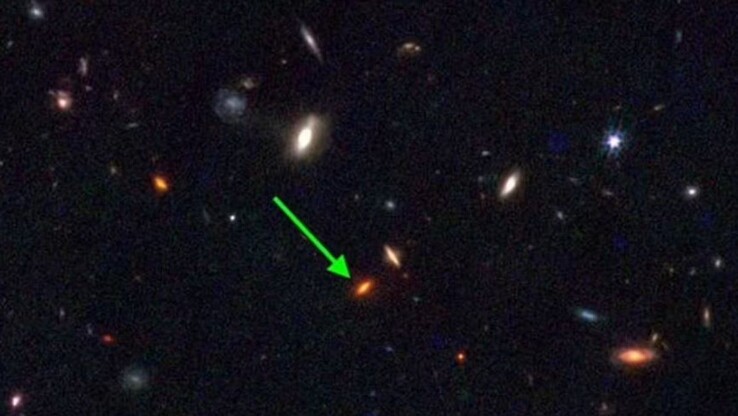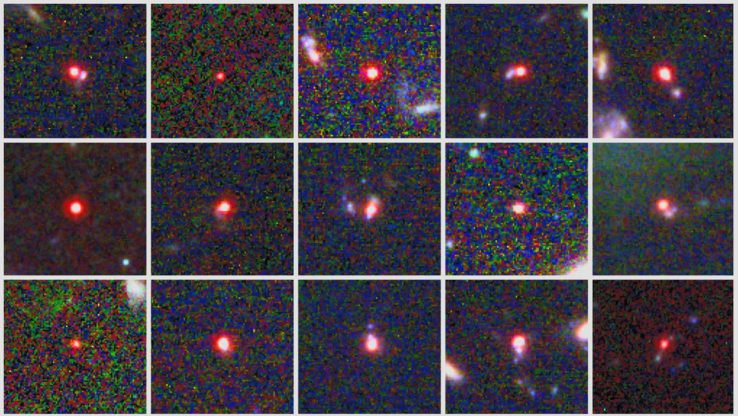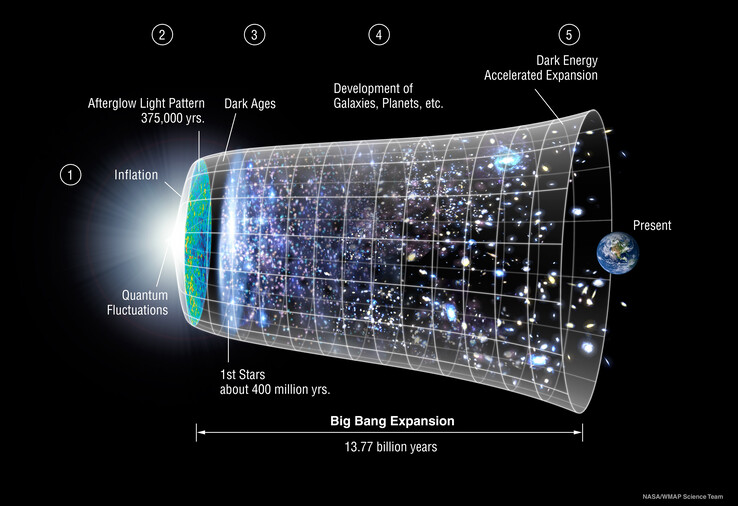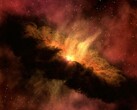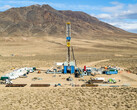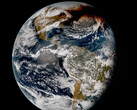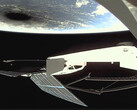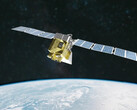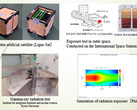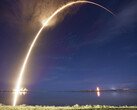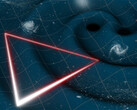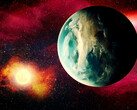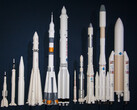Intro
Most of us have been taught - and taken for granted - that the universe started with a “Big Bang”, is roughly 13.7 billion years old, and continues to expand at a constant rate thanks to dark energy. Cold Dark Matter is thought to make up most of the matter in the universe, but is invisible and its effects can only be observed through gravitation forces. Ordinary matter - the sort we can see in planets, stars, gasses and so on make up a relatively small proportion of the total mass in the universe. These are key features of what is known as the standard cosmological model which is based on a theoretical framework known as the Lambda Cold Dark Matter (ΛCDM) model.
What is the JWST and how does it differ to the Hubble Space Telescope?
The launch of the James Webb Space Telescope (JWST) on December 25, 2021 is raising a number of serious questions about the standard cosmological model that are likely to result in revisions to the standard model, if not substantially - or even completely - rewrite it. For the uninitiated the James Webb telescope is the largest and most powerful space telescope ever made costing over $10B and taking nearly 20 years to build. The JWST's primary mirror is 6.5 meters (21.3 feet) across, significantly larger than Hubble's 2.4-meter (7.9-foot) mirror, providing it 6 times the light capturing capacity. While Hubble can capture some infrared light, it was primarily designed to capture visible light and ultraviolet light.
The JWST’s emphasis on capturing infrared light is important as it enables it to see through cosmic dust clouds and allows it to look much further back in time. As the universe is expanding, light from the earliest stars and and galaxies has “redshifted” from visible light into infrared wavelengths by the time it reaches our location in the universe. While the Hubble has been able to use gravitational lensing to see as far back as 13.4 billion years ago, JWST is able to resolve the images of these galaxies more clearly and see beyond the “toddler galaxies” (as NASA describes them) of the Hubble to the first galaxies that formed to see what should be “baby galaxies”. So far, the earliest galaxy that JWST has been able to observe has been identified as dating from just 320 million years after the Big Bang.
What are the Webb Telescope's most significant and challenging findings to date?
The JWST has discovered galaxies that – on the current 13.7 billion year cosmological time scale – make them aged between 500 million and 700 million years old. This is not in itself unexpected. What is unexpected is just how massive these galaxies are, many of which are aligned with the size of our own Milky Way galaxy. Until the JWST observed these galaxies, it was previously thought impossible for galaxies of such size to exist so early in the apparent history of the universe. Scientists had expected that the JWT would uncover relatively small galaxies during this time scale, but these large galaxies that have formed so early in the universe are being referred to as “universe breakers,” because they simply shouldn’t exist if the universe was only 13.7 billion years old as has been hypothesized.
One of these ancient galaxies, dubbed ZF-UDS-7329, is larger than the Milky Way but was formed just 800 million years after the Big Bang. Until its discovery, it had been thought that only galaxies of this scale could not be formed until dark matter had been seeded across the universe. Its existence upends both the age of the universe and the way scientists have believed were requirements for galaxies of this size to be able to take shape. JWST has also discovered other structures in space at the center of our own Milky Way – around 25,000 light years away – that scientists have never observed before and are struggling to explain. These include a blue cloud of ionized hydrogen that covers a massive region of space in the region of Sagittarius C, including what have been described as “needle-like” structures chaotically pointing in multiple directions.
One of the central features of the standard cosmological model is what is known as the Hubble Constant. Named after Edwin Hubble (like the telescope) who first observed that the universe was expanding and at a rate proportional and constant from an object's distance from Earth. Observations from the Hubble telescope resulted in what has become known as the Hubble Tension, where different techniques used to measure the universe’s rate of expansion have yielded different results. Now, the JWST has confirmed that these differing observations are indeed correct and that the universe is not expanding at a constant rate, but at differing rates that vary when we observe different parts of the universe. This finding directly contradicts current thinking regarding the expansion of the universe should a Big Bang have been central to its creation and subsequent inflation.
The JWST has also identified many more giant black holes that had already formed in what we understand to have been the early universe. This is also a completely unexpected finding. Typically supermassive black holes form through the accretion of gasses over many millions of years; but these supermassive black holes seemed to have formed much more quickly than previously thought possible. They also raise questions about whether they grew a lot more quickly than previously thought possible, or whether they were actually just born into existence big. Either way, the findings of the JWST will re-write the books – either about the way and rate at which supermassive black holes are formed and or whether the universe is much older than scientists originally thought.
What does it mean for the standard cosmological model?
One scientist from the University of Ottawa, Dr Rajendra Gupta claims that his most recent calculations indicate that the universe is not 13.7 billion years old, but 26.7 billion years old. He argues that the standard cosmological model that uses redshift to determine the age of the universe needs to also account for what is known as the “tired light theory” which suggests that the reason for the apparent redshift is not the distance that an object is away from Earth, but needs to also account for the fact that the energy of light photons dissipates over time. This could explain why a star like Methuslah, currently the oldest star ever observed, appears to be older than the currently accepted estimated age of the universe at 14.3 billion years old.
Gupta’s view is yet to be shared by the scientific community at large, however, as the JWST has only been operational since mid 2022 and there is a lot more data that it is yet to collect and a lot more number crunching and theoretical models to apply to the data. There are even more radical propositions than Gupta’s which purport that the origin of the universe did not start with the Big Bang at all while another theory presupposes that the universe has simply existed eternally. Following the launch of the JWST, one thing is for certain – the standard cosmological model will need to be revised at the very least. Only time will tell whether it will need to be completely re-written and replaced with an all-new explanation for the origin of the universe and its age.
Source(s)
Own


